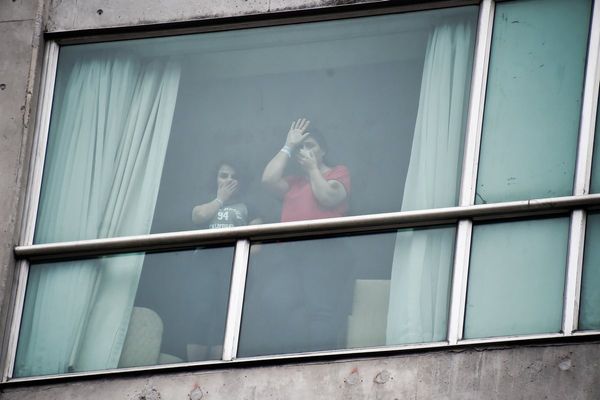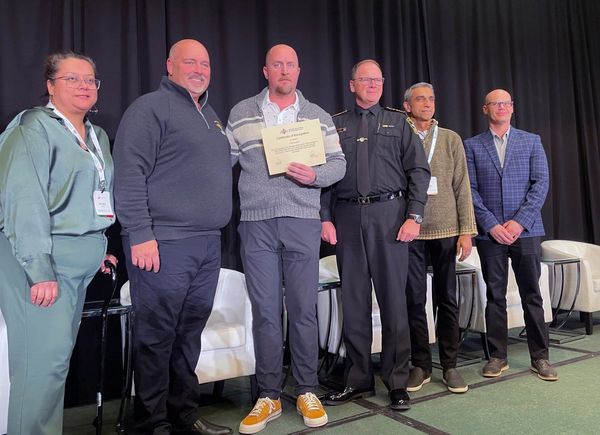
The prevailing image of Chicago public housing is that of blocks of big, grim brick-and-concrete towers.
It didn’t start out that way, though.
The first public housing developments, built under CHA Executive Director Elizabeth Wood, were humane, nicely designed, low- and mid-rise dwellings and townhomes with gardens and open space.
For instance, the former Jane Addams Homes opened on Taylor Street in the Little Italy neighborhood in 1938 with a pool, a fountain and a play area where children could climb on giant Art Deco limestone animal sculptures designed by Chicago’s noted modernist artist and designer Edgar Miller.
Most of all that is gone now, wiped away under the CHA’s Plan for Transformation, right along with much of the city’s old-school public housing.
Most — but not all. A surviving portion of the Addams Homes at Taylor and Ada streets is slated to open next year as the National Public Housing Museum. And as part of the reactivated buildings, those limestone animal sculptures — now undergoing a $300,000 restoration — will return to their old home.
“The animals were important,” said National Public Housing Museum Executive Director Lisa Yun Lee. “[They] were kind of the guardian angels of the space.”
A touch of whimsy set in limestone
The Addams Homes, along with the still-surviving Julia C. Lathrop Homes on the North Side and the Southeast Side’s Trumbull Park Homes, were the city’s first public housing units.
At each development, children’s playgrounds were important. The broad play area at Addams featured the Animal Court, with Miller’s large whimsical sculptures of various animals, including a buffalo, a lion, sheep, a bear and a bull.

The Rev. Marshall Hatch Sr., senior pastor of New Mount Pilgrim Missionary Baptist Church in the West Garfield Park neighborhood, was a child in the Addams Homes during the 1960s. He remembers playing softball on the court, with the clusters of animal figures serving as bases.
“The biggest one was always home base,” he said. “I’ve always thought about what it meant to go around through the animal kingdom, and then come back and touch home base. It was a metaphor for how that project development felt like: home.”
‘Joy’ over the sculptures’ return
Pitted and worn from 70 years of play and Chicago weather, the animal sculptures were put in storage 16 years ago, awaiting restoration funding, Lee said. A grant from the Alphawood Foundation finally got the project started.
Andrzej Dajnowski, founder of Conservation of Sculpture and Objects Studio, is handling the job. Among other work, his shop is responsible for last year’s refresh of the famed bronze lions outside the Art Institute of Chicago.

Dajnowski said the animal sculpture restoration includes resculpting missing and worn parts and the equally painstaking task of making sure the colors of the fixes and the original portions match.
“What we do will last for years to come,” he said.
“The actual restoration process is such a beautiful thing because [in some cases] some parts of the animal are not visible in the extant photos we have,” Lee said.
“And so that’s required Andrzej to go deep into the history to look at not just Edgar Miller drawings and other things of animals that he did, but also to look into even anthropological studies of, like, ‘What would a ram look like?’”
Lee said the sculptures should be ready for their return by summer.
But how they are to be displayed will be key. Lee envisions them being outdoors again and paired with information about their history and the remembrances of former residents. Dajnowski said he suggests protecting the artwork from freeze-and-thaw cycles.
Meanwhile, one of the exhibits in the completed museum will be a re-creation of the apartment in which Hatch’s family lived.
“[Former residents] have some incredible [memories] of endless summers on the playground,” Hatch said. “There is gratification and joy to know the animal sculptures are coming back.”
Lee Bey is the Chicago Sun-Times architecture critic and a member of the Editorial Board.
Want to write a letter to the editor or submit an op-ed for the Sun-Times? See our guidelines.







